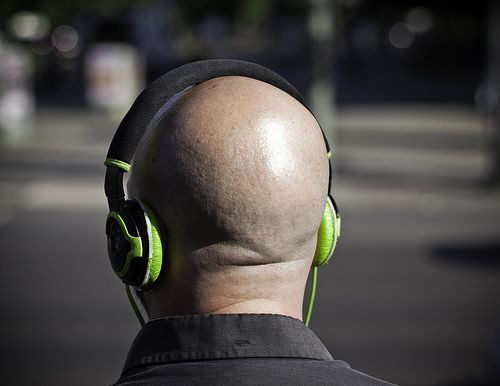Circumcised Foreskin Aids Baldness Cure? Scientists Discover New Path To Hair Regeneration

Three things that you may need in the future to repair baldness: a bit of scalp, some circumcised foreskin, and a new technique from Columbia University that combined the two to induce human hair growth for the first time.
For the millions dealing with hair loss, the concept could provide a route to restoration without the need of sizable quantities of donor hair for transplantation. Typically during hair transplantation, hair follicles from a healthy area of the body are relocated to the part of the skin lacking locks.
Yet there are patients — women, burn victims, those with scarring alopecia — who have insufficient donor hair for the procedure.
"About 90 percent of women with hair loss are not strong candidates for hair transplantation surgery because of insufficient donor hair," said co-study leader Dr. Angela M. Christiano, a dermatologist and professor of genetics & development at Columbia University. "This method offers the possibility of inducing large numbers of hair follicles or rejuvenating existing hair follicles, starting with cells grown from just a few hundred donor hairs."
For decades, scientists have known how to grow rat hair follicles from special cells in the skin called dermal papilla cells. The cells tend to spontaneously clump, which many assumed was important for spawning healthy hair follicles
But until now, no one had worked out how to get dermal papilla cells from humans to form these aggregates and grow hair.
“Dermal papilla cells give rise to hair follicles, and the notion of cloning hair follicles using inductive dermal papilla cells has been around for 40 years or so," said co-study leader Dr. Colin Jahoda, professor of stem cell sciences at Durham University, England, and co-director of North East England Stem Cell Institute.
The key of their discovery had less to do with circumcised foreskin, and more to do with balls — or more accurately growing the dermal papilla cells in 3-D spheres in a beaker, rather than in 2-D on a petri dish. When grown in a liquid soup sans any growth factors, the cells formed spherical clumps, reminiscent of what occur with rat cells.
"This suggested that if we cultured human papillae in such a way as to encourage them to aggregate the way rodent cells do spontaneously, it could create the conditions needed to induce hair growth in human skin," said first author Dr. Claire Higgins, an associate research scientist.
To generate a viable transplant, the human papilla spheres were slathered onto discarded foreskin collected after circumcision at the Children’s Hospital at Columbia University. The foreskin provided a hair-free scaffold for the papilla to use as a garden for new hair follicles.
This graft was then placed on the backs of bald mice, which led to fields of human hair growth after a few weeks.
"This approach has the potential to transform the medical treatment of hair loss," said Dr. Christiano. "Current hair-loss medications tend to slow the loss of hair follicles or potentially stimulate the growth of existing hairs, but they do not create new hair follicles. Neither do conventional hair transplants, which relocate a set number of hairs from the back of the scalp to the front. Our method, in contrast, has the potential to actually grow new follicles using a patient's own cells.”
The architectural differences between growing dermal papilla cells in 2-D plates versus 3-D spheres had a positive impact on the genetics of the implants. Three-dimensional cultures restored 22 percent of the gene expression seen in normal hair follicles.
The authors, however, want to find the precise genes responsible for hair regeneration with this method before moving to clinical trial.
"We need to establish the origins of the critical intrinsic properties of the newly induced hairs, such as their hair cycle kinetics, color, angle, positioning, and texture," said Dr. Jahoda, although the team is optimistic that trials could begin in the near future.
"This study is an important step toward the goal of creating a replacement skin that contains hair follicles,” Jahoda concluded.
Source: Higgins CA, Chen JC, Cerise JE, Jahoda CAB, Christiano AM. Microenvironmental reprogramming by threedimensional culture enables dermal papilla cells to induce de novo human hair-follicle growth. PNAS. 2013.



























